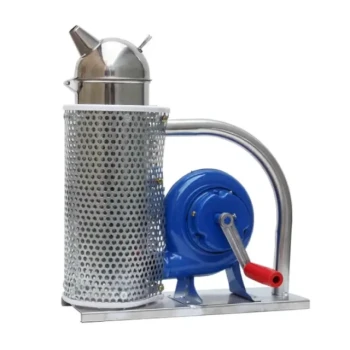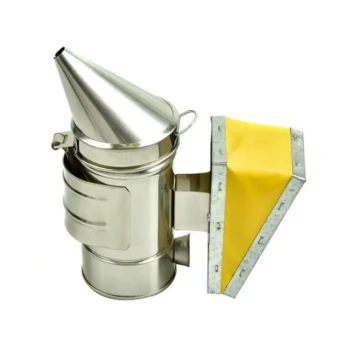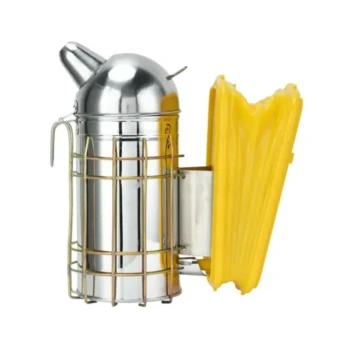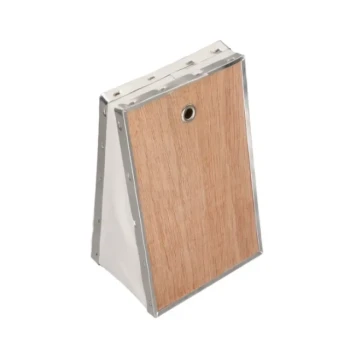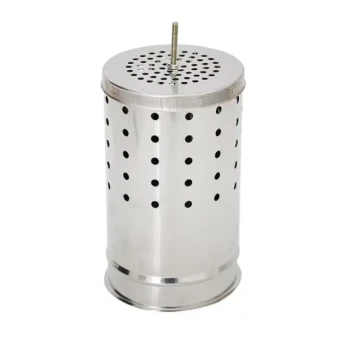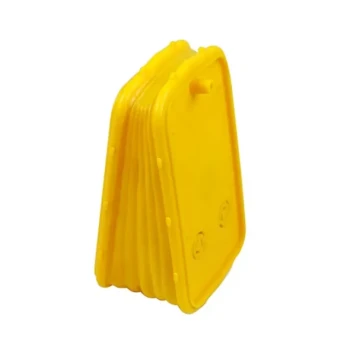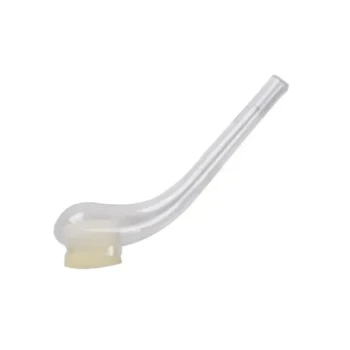In short, smoking a beehive calms the colony and makes them less defensive. The smoke works by masking the alarm pheromones that bees release when they perceive a threat, effectively jamming their communication channels and preventing a coordinated stinging response from the hive's guard bees.
The use of smoke is not about subduing the bees, but about interrupting their defensive instincts. It triggers a secondary survival response while simultaneously masking their primary alarm signals, allowing a beekeeper to safely inspect the hive.

The Two-Fold Effect of Smoke on Bee Behavior
To use a smoker effectively, it's essential to understand the two distinct biological responses it triggers in honey bees. Both work in concert to make the colony more docile.
Masking the Alarm System
The bees' primary defense against large predators is a coordinated attack, which is organized chemically. When a bee feels threatened, it releases alarm pheromones—specifically compounds like isopentyl acetate and 2-heptanone.
These pheromones act as a chemical beacon, signaling to other bees in the vicinity to become aggressive and attack the source of the threat.
Cool, white smoke from a beekeeper's smoker contains a high density of fine particles. These particles overwhelm the bees' sensitive antennae, which they use to "smell" the pheromones. This sensory overload masks the alarm signal, preventing it from spreading and turning a localized threat into a full-blown hive defense.
Triggering a Survival Instinct
Smoke also triggers a much deeper, more primal instinct related to fire. For millions of years, the smell of smoke has signaled a potential forest fire, which would destroy the hive.
When bees detect smoke, their immediate priority shifts from defense to survival. They instinctively begin to gorge themselves on honey, preparing to abandon the hive and take as much food with them as possible to start a new colony elsewhere.
A bee with a full abdomen of honey is physically less able to flex its body to deliver a sting. This, combined with their focus on feeding, makes them significantly more docile and less interested in the beekeeper.
Understanding the Trade-offs and Best Practices
While a smoker is an invaluable tool, its misuse can be counterproductive and even harmful to the colony. Objectivity requires acknowledging these risks.
Use Cool, White Smoke Only
The goal is to produce cool, white smoke. Hot smoke, or smoke containing sparks, can harm or kill the bees. It can also enrage a colony instead of calming it.
Proper fuel (like pine needles, burlap, or commercial smoker fuel) and a well-lit smoker are critical for producing the right kind of smoke.
Timing and Application Matter
As noted, you should apply a few gentle puffs at the hive entrance and wait a minute or two before opening the hive.
This waiting period is not arbitrary. It allows the smoke to circulate and gives the bees time to shift from a defensive posture to their feeding response. Opening the hive too quickly will negate the smoker's effect.
Less Is More
A common mistake among new beekeepers is using far too much smoke. The objective is to gently interrupt behavior, not to fumigate the colony.
Excessive smoke can be stressful for the bees, disrupt their respiratory systems, and even taint the honey with a smoky flavor. If you see bees becoming agitated during an inspection, a single, gentle puff across the top of the frames is often all that is needed to re-establish calm.
Applying Smoke Effectively and Humanely
Your approach to smoking should adapt to your specific goal for the hive inspection.
- If your primary focus is a quick, routine check: A few puffs at the entrance are often sufficient to calm the guard bees and allow you to begin your work.
- If your primary focus is a deep hive manipulation (like a honey harvest): Apply smoke at the entrance, wait, and then apply another puff or two under the inner cover as you open the hive to manage the larger population within.
- If you see bees becoming agitated during an inspection: A single, gentle puff directed across the top of the frames can re-establish calm without over-smoking the colony.
Used correctly, a smoker is a tool for communication, not subjugation, fostering a respectful partnership between beekeeper and bee.
Summary Table:
| Effect of Smoke | Key Action | Benefit for Beekeeper |
|---|---|---|
| Masks Alarm Pheromones | Jams bees' chemical communication | Prevents coordinated stinging response |
| Triggers Feeding Instinct | Bees gorge on honey, preparing to flee | Bees are less able to sting and more docile |
Ready to inspect your hives with confidence?
Proper equipment is key to safe and effective beekeeping. HONESTBEE supplies high-quality beekeeping supplies and equipment—including reliable smokers and fuel—to commercial apiaries and beekeeping equipment distributors through our wholesale-focused operations.
Contact HONESTBEE today to discuss your equipment needs and ensure your hive inspections are productive and safe for both you and your bees.
Visual Guide
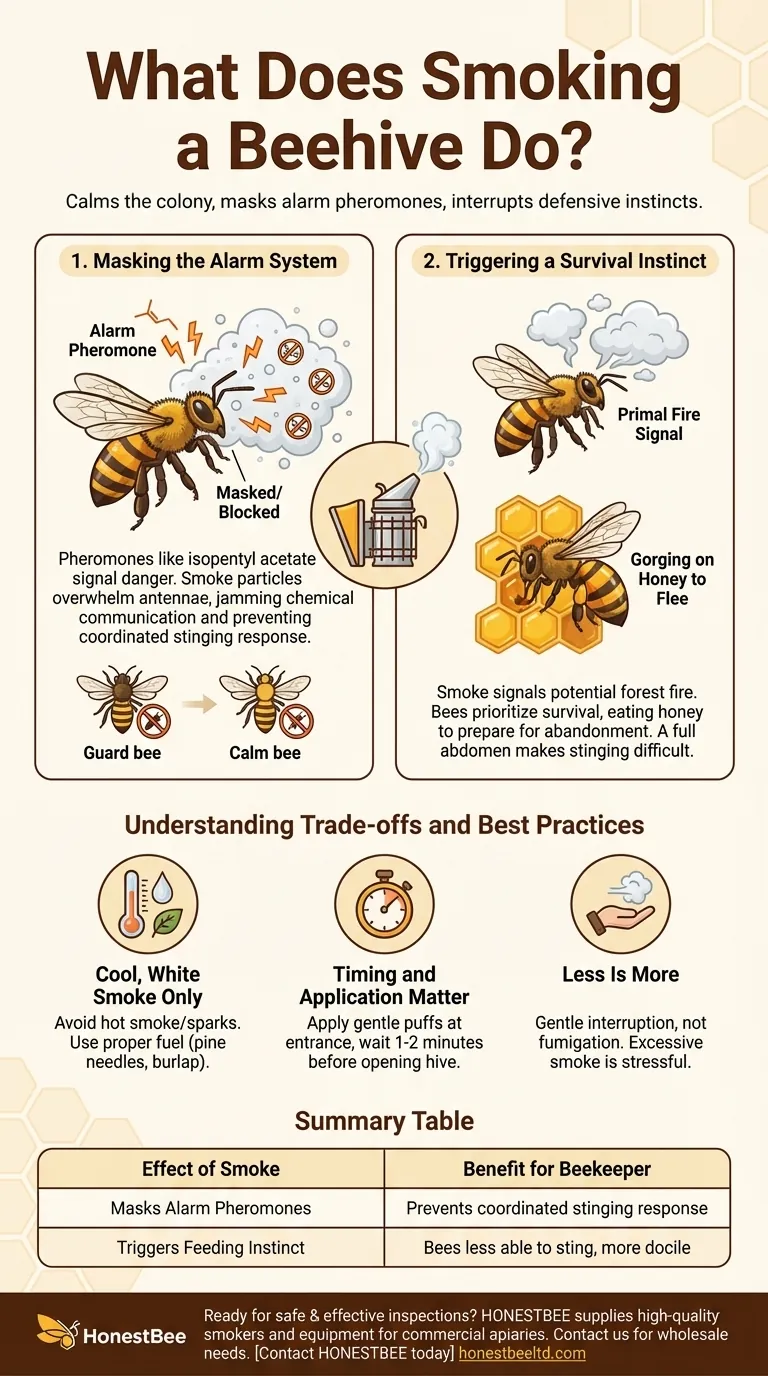
Related Products
- European Stainless Steel Bee Smoker for Honey Bee Hive
- Stainless Steel Electric Beehive Smoker for Beekeeping and Bee Keeper Use
- Stainless Steel Honey Bee Smoker Hive and Honeycomb Smoker for Beekeeping
- Premium Traditional Copper Bee Smoker with Bellows
- Electric Bee Smoker European Style Bee Hive Smoker for Beekeeping
People Also Ask
- What are the advantages of a high-quality bee smoker? Achieve Calm, Confident Hive Management
- What are the benefits of smoking bees? Achieve Safer, Calmer Hive Inspections
- What are the features of a recommended bee smoker? A Guide to Safety, Durability & Performance
- What are the differences between stainless steel and galvanized steel bee smokers? Choose the Right Smoker for Your Apiary
- What factors should be considered when choosing a bee smoker? Find the Right Tool for Safe, Effective Hive Management






